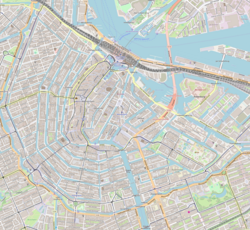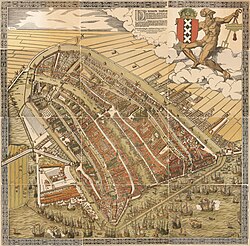| Schreierstoren | |
|---|---|
Schreierstoren | |
 | |
| General information | |
| Type | Rijksmonument |
| Location | Amsterdam |
| Address | Prins Hendrikkade 94 1012 AE [1] |
| Country | Netherlands |
| Coordinates | 52°22′35″N4°54′08″E / 52.37644°N 4.90227°E |
| Completed | 1487 |
| References | |
Dutch Rijksmonument 4148 | |
The Schreierstoren (English incorrectly translated as: Weeper's Tower or Tower of Tears), originally part of the medieval city wall of Amsterdam, the Netherlands, was built in the 15th century. It is located at the Prins Hendrikkade 94 [1] in the city center of Amsterdam. It was the location from which Henry Hudson set sail on his journey to Northern America. This expedition would lead to the discovery of the modern New York metropolitan area, which laid the foundation for Dutch colonization of the region. It was built as a defense tower in 1487. [2] It is currently a café and nautical bookstore.











